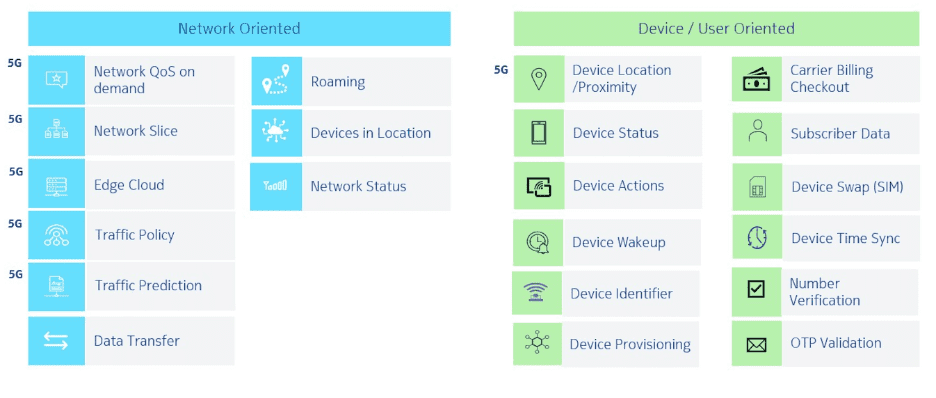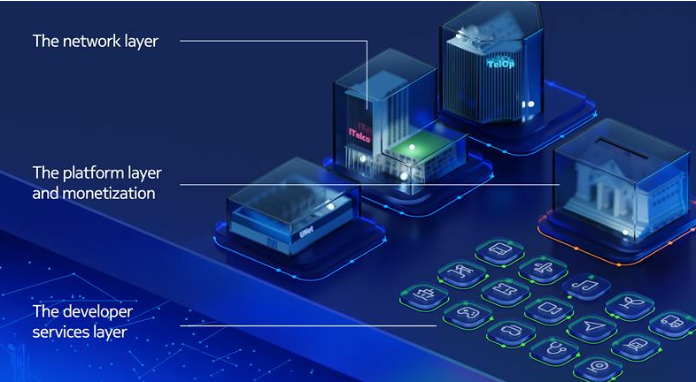We’ve all heard the phrase, “it takes two to tango;” the same can be applied to network-based ecosystems
Communication service providers (CSPs) have invested over $100 billion in their 5G networks and are looking for a return on that investment. The growth of traditional communication services is limited, and new revenue streams are imperative. To energize and catalyze new revenue growth, 5G networks need to build closer tie-ins to applications that will utilize the 5G capabilities in ways previously not possible.
To monetize their 5G network successfully, CSPs are seeking ways to enable a wonderfully frictionless exchange of services and experiences; stimulate innovation, usage and business growth; deliver at speed; and enable users to create and derive value.
The newly deployed 5G networks have numerous features that cater to the requirements of Industry 4.0 applications, including remote inspection using drones, public safety, automated terrestrial vehicles, supply chains driven by digital twins, adaptable manufacturing systems and maintenance utilizing mixed reality.
And that’s where I believe a network-powered ecosystem comes into play.
A network-powered ecosystem that involves CSPs, app developers and enterprises is crucial for driving new revenue from Industry 4.0. All stakeholders in this ecosystem aim to benefit CSPs by providing developers access to their network properties; developers by delivering new application experiences; and enterprises by offering new products and services.
CPaaS is just the first steppingstone
CPaaS (Communication Platform as a Service) has set the direction for this concept by opening access to messaging, voice and video capabilities through programmability in various digital ecosystem applications. For example, an Uber passenger can now text or call their driver directly via the Uber app.
However, while CPaaS is a strong start in the right direction, it restricts CSPs’ revenue-earning potential from the voice, video and messaging services that underpin CPaaS provider APIs.
CPaaS also limits what developers can do with the network. It provides developers with a narrow set of communication services APIs whereas developers will need access to a much broader set of network capabilities.
The next step is to go beyond CPaaS and expose new capabilities within these modern networks, such as real-time broadcasting of immersive video, edge processing offloading, and control for autonomous vehicles or robots. Applications will be able to interact and adjust in real-time, which has never been possible before.

As shown in the figure above, we categorize advanced use cases in two layers:
- Capabilities beyond CPaaS available in networks today
- Capabilities that are unique to 5G networks
Developers working on industrial and enterprise applications are aiming to enhance business efficiency, customer engagement, sustainability and safety by optimizing the building, visualization, operation and management of physical objects and processes.
Several new technologies are emerging to take the data-driven 5G advanced industrial use cases, such as robotic production lines, logistics hubs, drone highways, smart cities and virtual workplaces to a higher level of virtual reality. These technologies include AI/ML, haptics, motion tracking, volumetric video streaming, photorealistic rendering, hyper-accurate positioning and virtual reality.
Turning hurdles into opportunities
The challenge is to present these value vectors in a way that developers can quickly incorporate them into their applications. An ecosystem paradigm that joins network providers with developers to create and run applications will benefit all participants. The earlier CPaaS model was set up in a similar fashion, but there are considerable differences in going beyond the primary value vectors of voice, messaging and video.
The ecosystem needs to simplify the underlying network complexity for developers by providing a developer services layer. Developers will use network API calls to access the functionality within the networks, but most developers are not network engineers and will not use native network APIs. Instead, some method to simplify and aggregate the network complexity is critical.

The developer journey starts with the development phase, where support such as sample code, documentation and web-based plug-and-play interfaces is essential to get developers to embed network capabilities into their applications. This will be an iterative educational process that will be most successful when tied to relevant use cases.
The runtime phase is where the developer has completed the development phase, written their application and placed it into production. Most of the attention during the runtime phase will be on the operational performance of the applications and the ongoing steps to improve and add more value.
The network layer is the counterpart to the developer layer, and this is where things get interesting. APIs will of course be the critical link through which those functions are exposed and called by applications. There is considerable effort underway in open source communities such as CAMARA and other groups making very important strides in this area. Things like universal definitions and frameworks to assist with API normalization and usability.
The concept of network and telecom APIs is not new, but what will be different this time is the evolution to cloud-native and the need to expose a wealth of additional capabilities beyond CPaaS. This will result in monetizable value for developers and network providers.
Value creation at scale
The 5G era presents a significant opportunity for network providers and developers to work together to create new revenue streams and unlock the full potential of these advanced networks. By exposing the extended value vectors beyond CPaaS, applications can be developed to utilize these capabilities in ways never before possible, resulting in monetizable value.
The key to success lies in the ability to simplify the underlying network complexity into something that developers can easily utilize and provide them with the necessary support during the development phase. With a well-structured ecosystem that joins network providers and developers together, this next generation of network capabilities can be leveraged to drive innovation, growth, and profitability for all participants.
